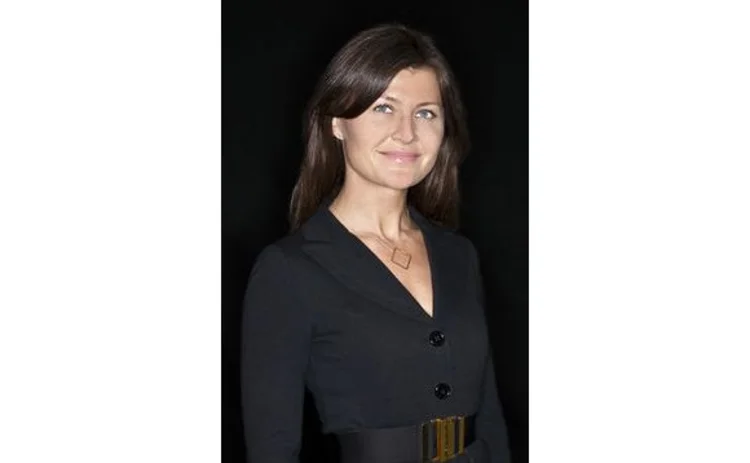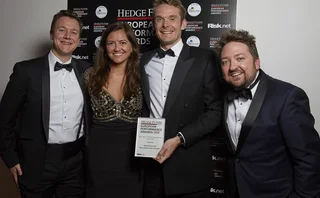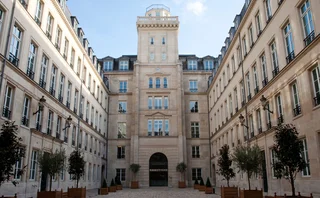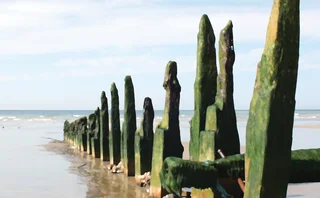
Alive and kicking
Salida Capital was among the hedge funds hardest hit by the financial crisis. The Canadian hedge fund has since staged a remarkable recovery and now has its sights firmly set on expansion, reports Kris Devasabai

When Courtenay Wolfe took the reins as president and CEO of Salida Capital in October 2008, the Toronto-based hedge fund company was facing the biggest crisis in its history.
The performance of Salida's funds had fallen off a cliff at the onset of the financial crisis and its flagship onshore Multi-Strategy Fund was on its way to a 66% loss for the year.
To make matters worse, three of Salida's offshore funds used Lehman Brothers as prime broker and had to be closed after assets were frozen in London following Lehman's collapse.
Over a span of five months, from June to October 2009, the company's assets under management (AUM) plunged more than 80% from a peak of $1.4 billion to around $200 million.
The company has since staged a remarkable recovery. Salida's three main hedge funds posted triple digit returns in 2009 and assets under management have rebounded to $600 million.
Wolfe says she always beleived Salida would bounce back. "The investment team here is incredibly talented. I took over the CEO role at a very difficult time for Salida, but I really believed that if we could get through the worst of it, there would an enormous opportunity on the other side," says Wolfe.
Despite the gravity of the situation, Wolfe did not make wholesale changes. "This was a good business, well capitalised and with a talented team. The main thing was to keep moving forward, stay focused, make quick decisions and get through the pain. We can't all stare at the screen and get paralysed. Everyone had a different role to play," says Wolfe.
Salida held on, helped in no small part by its outstanding track record and a diversified client base. Its investors include institutions, family offices and wealthy individuals worldwide, while partner capital accounts for around 25% of AUM.
Salida's portfolio managers delivered in a big way in 2009. The Multi-Strategy Fund, managed by Brad White, was up 182% in 2009, fully recovering its prior losses. Its offshore funds did even better. The Strategic Growth Fund, managed by founder Danny Guy, was up 209% and the Global Energy Fund gained over 220%.
With performance back on track and its funds back above their high watermarks, Wolfe is pushing forward with plans to expand Salida's business.
Wolfe has an impressive track record of creating and growing strong businesses. In the 1990s she launched Dell Computers' online division in Canada and built it into the largest e-commerce business in the country. Wolfe then joined Tricycle Asset Management as head of its sales, marketing and operations teams and grew its assets from under $100 million to more than $1 billion in three years.
Wolfe believes Salida has a good platform from which to grow. Even with the losses in 2008, the Multi-Strategy Fund is ranked as the top-performing fund in Canada over five years, with annualised returns of over 30%. The Global Energy Fund is ranked by BarclayHedge as the second best-performing hedge fund globally in the energy sector.
Wolfe is keenly aware that performance alone is not a marketing strategy. Salida's performance has always been strong. However, the company has struggled to get its story across to investors. "In today's world, hedge funds are not bought, they are sold. Our aim is to deliver superior performance but we also have to be active about educating investors and making sure they understand what we have to offer," she says.
One of Wolfe's big initiatives since joining Salida has been to improve the way it communicates with its investors and the broader market. This came to the fore in 2008 when investor confidence was at its lowest. Salida dealt with the issue head on, hosting an open conference call to discuss its performance and its strategy for dealing with the market crisis.
"It was a painful call to make but it was important for our investors to understand where the pain was coming from and how we were dealing with it. We did that every month from July until the markets stabilised. At the end of 2008 we were very vocal about the opportunities in the market and told people that now was the time to invest," says Wolfe.
Salida has kept its communication lines open. Its portfolio managers publish regular market commentaries and investment views and host quarterly conference calls to discuss their performance and future plans. Wolfe firmly believes this type of outreach will help Salida to build better relationships with its investors and position it for future growth. "It has never been more important to provide as much transparency as possible and educate investors about hedge funds. The black box model is gone," she says.
"Investors need to understand what we do before they can have confidence in us. We want them to be long-term investors but there could be volatility along the way. The more aligned they are with our way of thinking, the longer they are likely to stay with us," she says.
Another big area of focus for Wolfe is risk management. Over the past year the company has adopted an enterprise risk management model with an emphasis on operational risk and compliance and regulatory issues as well portfolio risk management.
On the operational side there is a greater focus on counterparty risk with each fund using two prime brokers. The company has also hired a vice president to lead its compliance efforts. A new risk management system for the front office is expected to be implemented by the end of the first quarter of 2010.
"Risk management has become the number one priority for investors. It has to be one of our strengths if we want to grow our investor base in a significant way," says Wolfe.
Salida has beefed up its sales force and is actively marketing its funds to new investors. AUM has rebounded to over $600 million, mainly due to performance. Wolfe says there is still plenty of room for growth. "Each of our funds has a capacity of around $500 million. We could easily manage $2 billion without negatively impacting performance," she notes.
Salida's funds have a long bias towards natural resources and precious metals. The investment team's macro view is that higher inflation and growing demand from developing countries will create a bullish environment for commodities and hard assets over the long term.
Security selection is based on fundamental analysis, with a focus on event-driven trades where a catalyst event can unlock the value in underpriced securities. "Our portfolios tend to be heavily concentrated in the investment team's best ideas. We think you have 10-15 really good ideas a year and you have to make them a meaningful part of the portfolio. Our top 10 positions account for around 50% of the portfolio," says Wolfe.
In January the company started offering its Strategic Growth and Global Energy funds to Canadian investors as onshore investments. It also launched the Wealth Preservation Fund, which has a more conservative strategy than Salida's other funds.
"The Wealth Preservation Fund came out of the conversations we had with potential investors. People told us that they believed in our macro themes and wanted access to our expertise but they wanted something with a lower risk/return objective than our existing products," says Wolfe. The Wealth Preservation Fund targets returns of 10%-15% a year with monthly liquidity and lower volatility than the TSX index.
"We think it is important to offer a diversified range of funds that resonate with our investor base. The Wealth Preservation Fund is designed to appeal to a broader audience than has traditionally been attracted to Salida's funds," says Wolfe
Only users who have a paid subscription or are part of a corporate subscription are able to print or copy content.
To access these options, along with all other subscription benefits, please contact info@risk.net or view our subscription options here: http://subscriptions.risk.net/subscribe
You are currently unable to print this content. Please contact info@risk.net to find out more.
You are currently unable to copy this content. Please contact info@risk.net to find out more.
Copyright Infopro Digital Limited. All rights reserved.
You may share this content using our article tools. Printing this content is for the sole use of the Authorised User (named subscriber), as outlined in our terms and conditions - https://www.infopro-insight.com/terms-conditions/insight-subscriptions/
If you would like to purchase additional rights please email info@risk.net
Copyright Infopro Digital Limited. All rights reserved.
You may share this content using our article tools. Copying this content is for the sole use of the Authorised User (named subscriber), as outlined in our terms and conditions - https://www.infopro-insight.com/terms-conditions/insight-subscriptions/
If you would like to purchase additional rights please email info@risk.net
More on Hedge funds
JP Morgan warns hedge funds to expect intraday margin calls
US bank may demand variation margin ‘up to seven’ times a day after Archegos default
Alternative markets give edge to Florin Court strategy
By concentrating on exotic and alternative markets, Florin Court Capital Fund has sidestepped overcrowding and correlation to the main trend following commodity trading advisers, offering investors a diversified alternative to the standard systemic macro…
Global macro views combine with quantitative models to produce consistent returns
The team behind River and Mercantile Group’s global macro strategy team operates under two key principles: that macro is the most important aspect of any investment decision and that decision-making should incorporate both systematic and discretionary…
On the offensive – Seeking a new edge, buy-side invests in portfolio and risk analytics
A fast-moving, headstrong hedge fund – hit by rare losses after a black swan event touched on an overweight country exposure – ponders adding fresh quantitative expertise. Much to traders’ chagrin, the chief investment officer and chief operating officer…
Esma backtracks on account segregation
Status quo protected for rehypothecation of collateral in tri-party, securities lending and prime brokerage
Redemptions focused within strategies suffering losses in 2016
Redemptions focused within strategies suffering losses in 2016
Hedge fund redemptions a dismal end to a bad year
Managed futures funds saw big inflows in 2016, but left investors disappointed
Larger funds are net losers as outflows continue
Managed futures funds have seen biggest redemptions for three years







